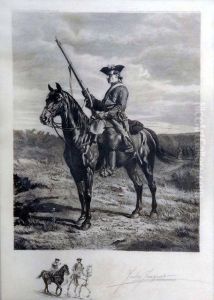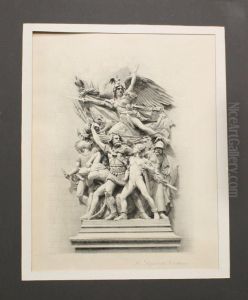Jules Jacquet Paintings
Jules Jacquet was a notable French engraver born in 1841 in Paris, a city that has long been a hub for artists and creatives. Throughout his career, Jacquet achieved recognition for his mastery in the art of engraving, a printmaking technique that involves incising a design onto a hard surface by cutting grooves into it. This method was particularly important before the advent of modern printing techniques, as it allowed for the reproduction of artworks and texts.
Jacquet was educated at the École des Beaux-Arts in Paris, one of the most prestigious art schools in France. Here, he honed his craft under the tutelage of well-known figures in the art world, which was instrumental in shaping his artistic direction. The 19th century was a period of significant change and innovation in the art world, and Jacquet's work was influenced by the various movements of his time, including Romanticism and Realism.
He was closely associated with the Barbizon school, a movement that emphasized the beauty of the French countryside and rural life. Although primarily focused on engraving, Jacquet's work often reflected the themes popular among painters of this school, indicating a crossover of influences among different art forms of the period.
Throughout his career, Jules Jacquet participated in numerous exhibitions, earning accolades for his technical skill and artistic sensibility. His engravings were celebrated for their detail, composition, and ability to convey the texture and atmosphere of the original paintings. Jacquet's contributions to art were not limited to his own creations; he played a significant role in preserving and disseminating the works of other artists through his engravings, thereby contributing to the broader appreciation and understanding of art history.
Jules Jacquet's legacy extends beyond his death in 1913. His works are preserved in various museums and collections around the world, where they continue to be studied and admired for their craftsmanship and beauty. As an engraver, Jacquet contributed significantly to the art world, bridging the gap between the traditional techniques of the past and the evolving artistic expressions of his time.

